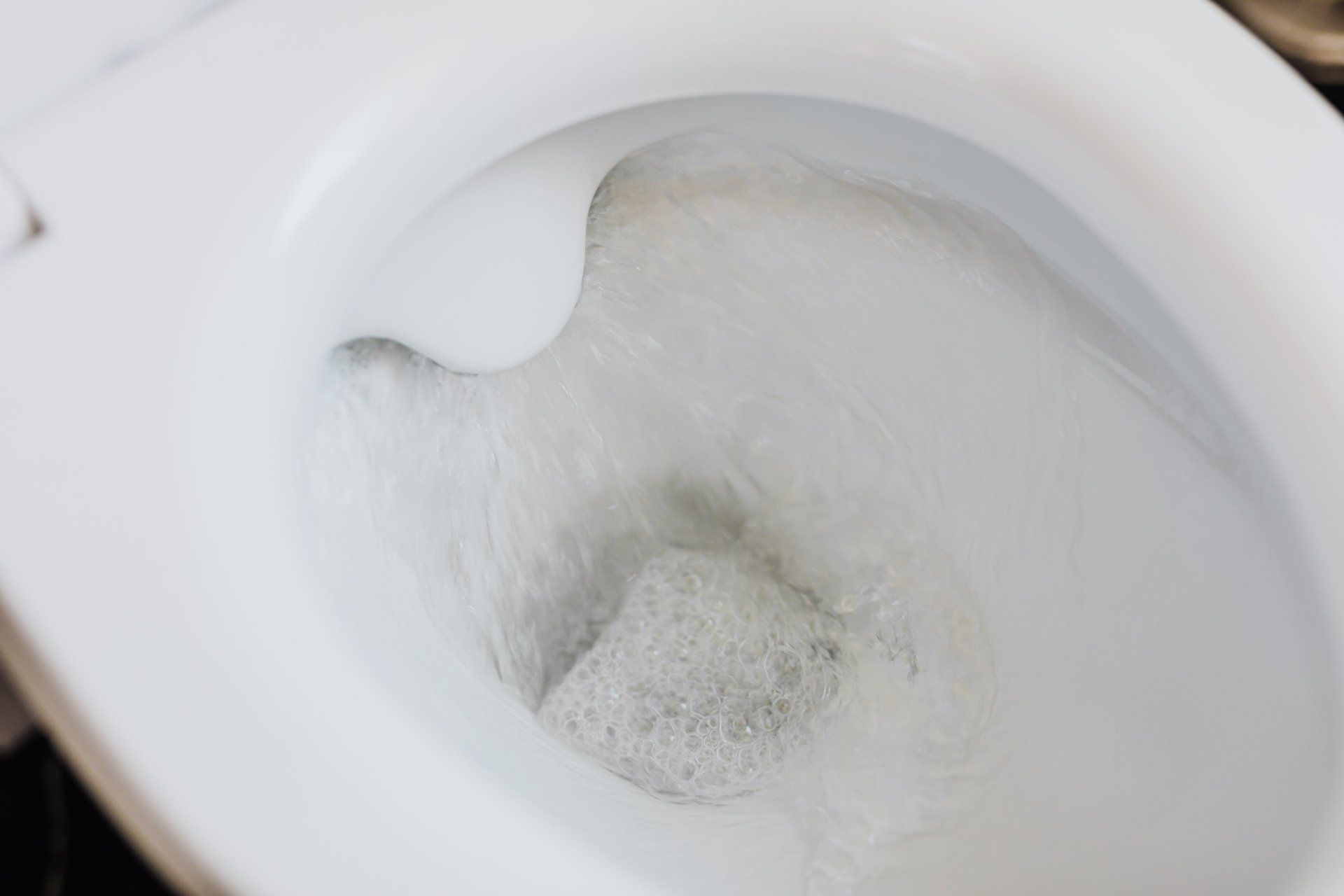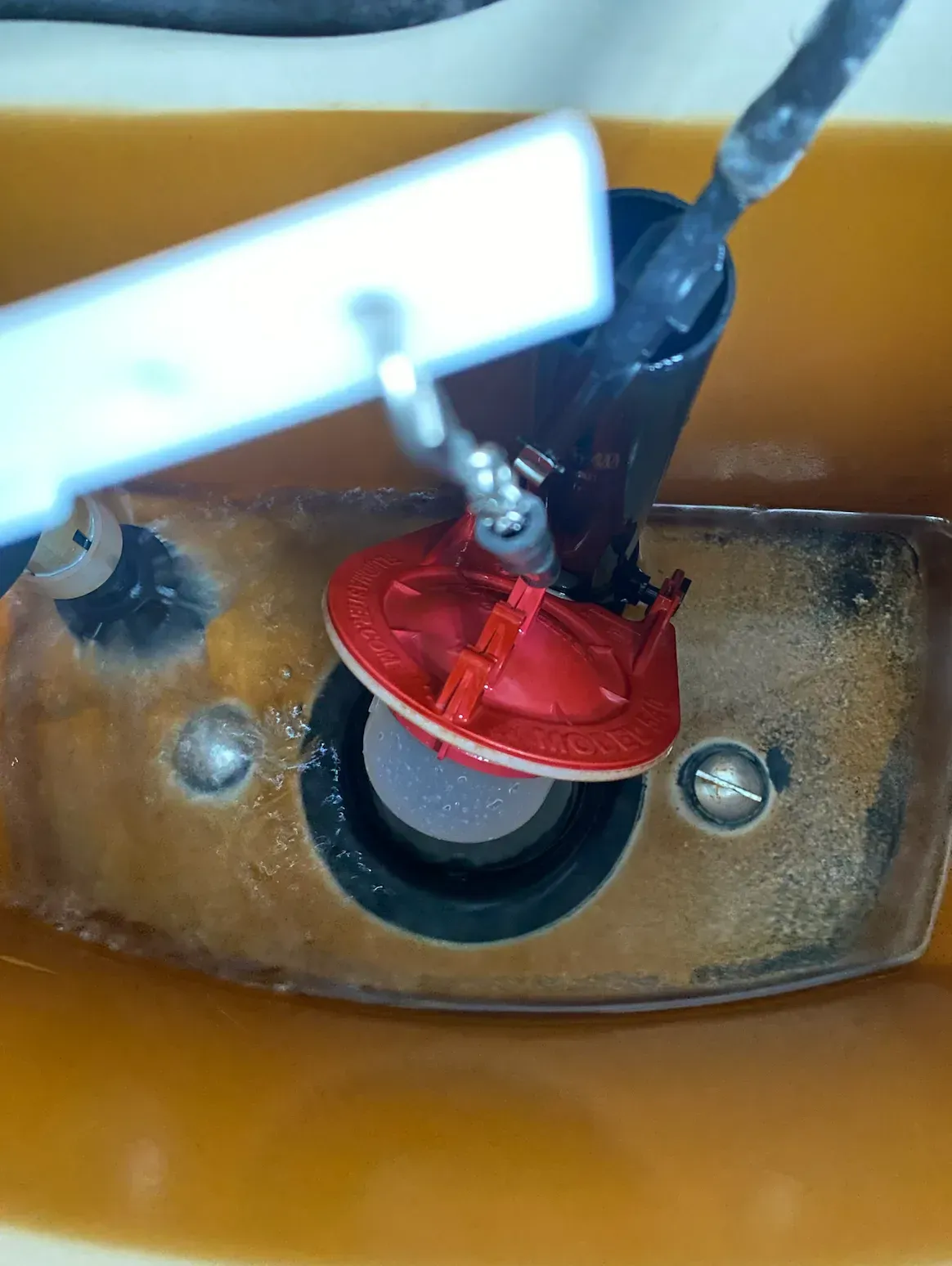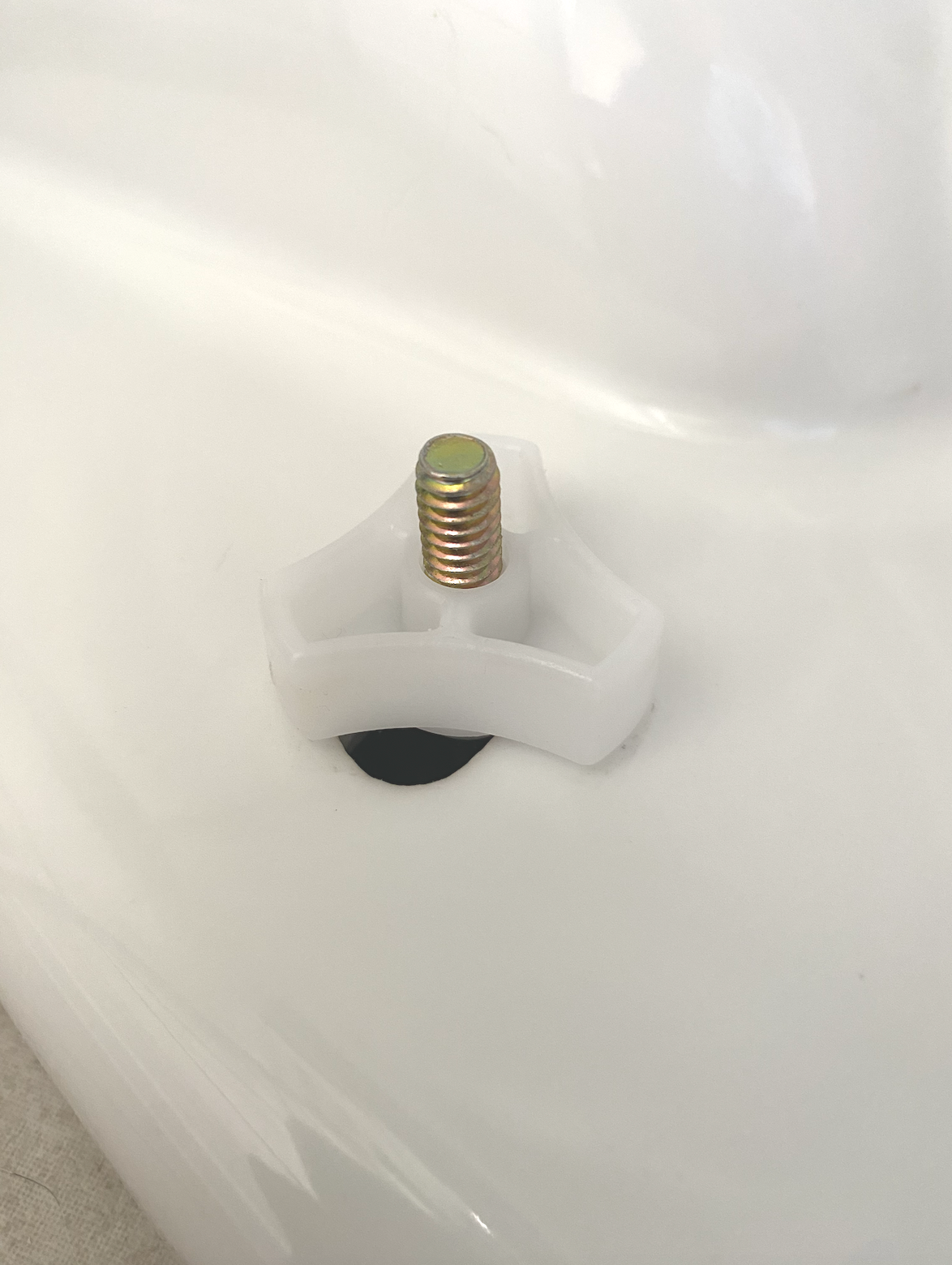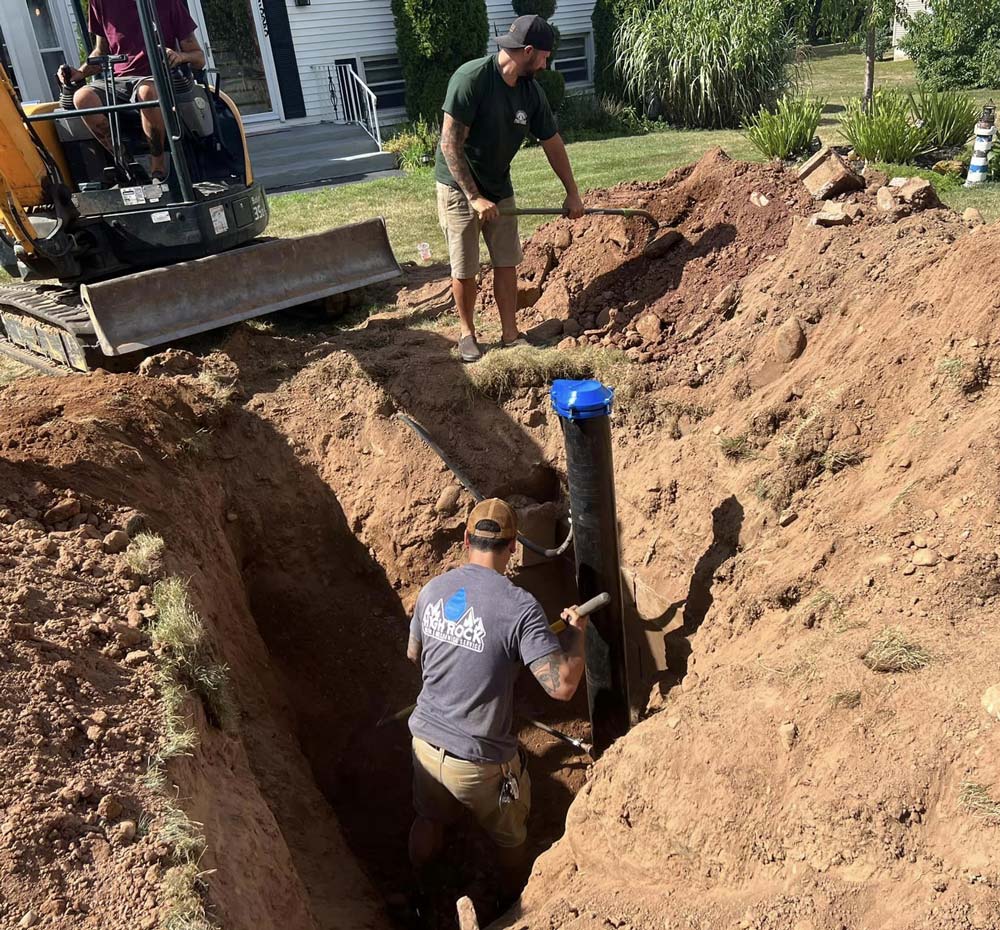Understanding Toilet Leaks
Dealing with a leaky toilet can be frustrating and potentially damaging to your home. The longer you wait to fix what may seem like a small leak, can lead to larger plumbing problems down the road. Before you need to call an expert plumber to help you fix a leak, there are some things you can do at home to prevent and check for the cause of the leak. We’ll explore the common causes of toilet leaks and provide practical solutions to help you tackle this issue effectively. Let's dive in and help you find the source of your plumbing issue.
Toilet leaks occur when water escapes from the tank or bowl, causing a continuous flow or occasional drips. Identifying the root cause is crucial to finding the right solution. Here are 5 of the most common toilet leaks that our team sees on a daily basis:
1. Replacing Your Toilet Flapper
If your toilet is leaking, the place that we recommend to inspect first is the toilet flapper in your toilet tank. The toilet flapper is a crucial component located in the toilet tank. The flapper is essentially a rubber mechanism that looks like a circular or oval "cap" attached to a chain. When the toilet flush lever is pressed, it pulls up the flapper, allowing the water in the tank to flow down into the toilet bowl. Once the tank is emptied, the flapper falls back down, creating a seal that allows the tank to refill with water for the next flush. When the flapper becomes faulty, it often results in constant or intermittent leaks. Over time, flappers can degrade, become misaligned, or simply wear out, leading to leaks or a running toilet. Here are two common fixes for a faulty flapper:
- Adjust the Flapper Chain: If the chain connecting the flapper to the flush handle is too loose or too tight, it can prevent the flapper from sealing properly. This can result in a running toilet or leaks. By adjusting the chain length to the right tension, you can achieve a watertight seal.
- Replace the Toilet Flapper: If adjusting the chain doesn't solve the problem, or the flapper is visibly worn or damaged, it may be necessary to replace it. To do this, you'll need to drain the toilet tank, disconnect the old flapper from the overflow tube and the flush lever, and then attach the new flapper in the same manner. Follow the manufacturer's instructions for installation.
Read this article if you’re looking to learn how to replace your toilet flapper.
2. Replacing your Toilet Fill Valve
The fill valve, also known as the ballcock, regulates the water level in the tank after each flush. When the fill valve is damaged, it can cause water to continuously flow into the overflow tube, resulting in leaks. Consider the following solutions:
- Thoroughly examine the fill valve for cracks or signs of wear and tear. Inspect the float mechanism and ensure it moves freely without any restrictions.
- Replace the fill valve with a new one if it is not functioning properly. Choose a fill valve that matches your toilet's specifications and follow the manufacturer's instructions for installation. Remember to turn off the water supply before starting the replacement process.
Read this article if you’re looking to learn how to replace your toilet fill valve.
3. Loose Connections
Loose connections within the toilet's plumbing system can also contribute to leaks. Check the following areas for loose or damaged connections:
- Bolts securing the tank to the bowl: These bolts keep the tank tightly attached to the bowl. If they are loose or corroded, water can leak from the tank. Tighten the bolts with a wrench, but be careful not to over tighten and crack the porcelain.
- Water supply line connecting the tank to the wall: Inspect the connection between the water supply line and the toilet tank. If there are any signs of leakage or loose fittings, it's crucial to address them promptly. Tighten the connection or replace the supply line if necessary.
4. Your Toilet Tank Is Leaking
If your toilet tank is leaking, it could be due to a variety of issues such as a faulty tank-to-bowl gasket, loose tank bolts, or a crack in the tank. Here's what you can do:
- Faulty Tank-to-Bowl Gasket: The tank-to-bowl gasket seals the gap between the toilet tank and the bowl, preventing water from leaking out. If the gasket is worn out or damaged, it can cause a leak between the tank and the bowl. To resolve this, you will need to replace the gasket. This involves draining the tank, removing it from the bowl, replacing the old gasket, and reinstalling the tank. Make sure you purchase the right gasket that matches your toilet model.
- Loose Tank Bolts: The bolts that connect the toilet tank to the bowl can sometimes become loose over time, which can result in leaks. To fix this, you'll need to tighten the bolts with a wrench. Be careful not to over tighten, as this can crack the toilet. If the bolts are corroded and can't be tightened, they will need to be replaced.
- Cracked Toilet Tank or Bowl: A crack in the toilet tank or bowl is a more severe cause of leakage. Cracks can develop due to physical damage, age-related wear and tear, or even faulty manufacturing. Inspect the tank and bowl carefully for any visible signs of cracks. If you spot a crack, even if it's small, it can lead to more serious leaks and should not be ignored. Contact High Rock Water Plumbing or your trusted local plumber to assess the extent of the crack and recommend the best course of action. They will evaluate whether the crack can be repaired or if a toilet replacement is necessary.
5. Your Toilet Is Leaking FROM THE BOTTOM
If you notice water pooling around the base of the toilet, it could indicate a leak from the wax ring seal between the toilet and the floor. Here's what you can do:
- Inspect the wax ring: The wax ring provides a watertight seal between the toilet flange and the base of the toilet. Over time, this wax ring can deteriorate or get damaged, which leads to water leaks around the base. To inspect the wax ring, you'll need to remove the toilet from the floor. If you find the wax ring to be worn out or damaged, it should be replaced. This task can be quite complex and messy, so you might want to consider hiring a professional plumber to ensure a proper replacement and seal.
- Inspect the floor flange:
The floor flange is the fitting that both attaches the toilet to the sewer pipe and anchors it to the floor. Leaks can also occur if the floor flange is cracked or broken. To inspect the floor flange, you will need to remove the toilet as well. If you see signs of damage, it's usually best to hire a professional plumber to replace the flange and ensure the toilet is properly installed.
OUR Toilet Leak Prevention TIPS
To minimize the risk of toilet leaks, follow these preventative measures and maintenance tips:
- Regularly check for visible leaks or water pooling around the base of the toilet. If you notice any moisture, it may indicate a leak that needs to be addressed.
- Operate the flush handle gently to avoid putting excessive strain on the flapper and other components.
- Use caution with harsh chemicals or abrasive cleaners, as they can corrode seals and cause leaks. Opt for toilet-friendly cleaning products instead.
When to Contact a Professional Plumber for a Toilet Leak
By understanding the common causes of toilet leaks and implementing the appropriate solutions, you can effectively address and resolve some common issues. However, if you encounter complex or severe leaks, it's always advisable to consult a professional plumber in your local area.
High Rock Plumbing is here to assist you with any concerns you may have. Our expert team is well-equipped to handle toilet leak repairs and other plumbing issues effectively.
Contact us for professional assistance and enjoy peace of mind in maintaining your home's plumbing system.
CT'S Best Well Water Service Professionals
OVER 50 YEARS OF COMBINED EXPERIENCE
Our plumbers have a profound experience on working residential property.
CERTIFIED & LICENSED PLUMBERS
Our plumbers have the latest certifications and trainings to ensure they are educated on new technology.
FREE QUOTES ON ALL SERVICES
At High Rock Water & Mechanical Service, we provide free quotes for any of our customers.
WELL KNOWN IN THE CONNECTICUT AREA
We have been servicing our customers in and around the western and central CT area for over a decade.
HIGHLY RATED ON GOOGLE
Our reviews show how dedicated we are to helping our customers.
100% CLIENT SATISFACTION
Our goal is to have all of our customers to be happy customers and to think of High Rock Water & Mechanical Service whenever they need us.












